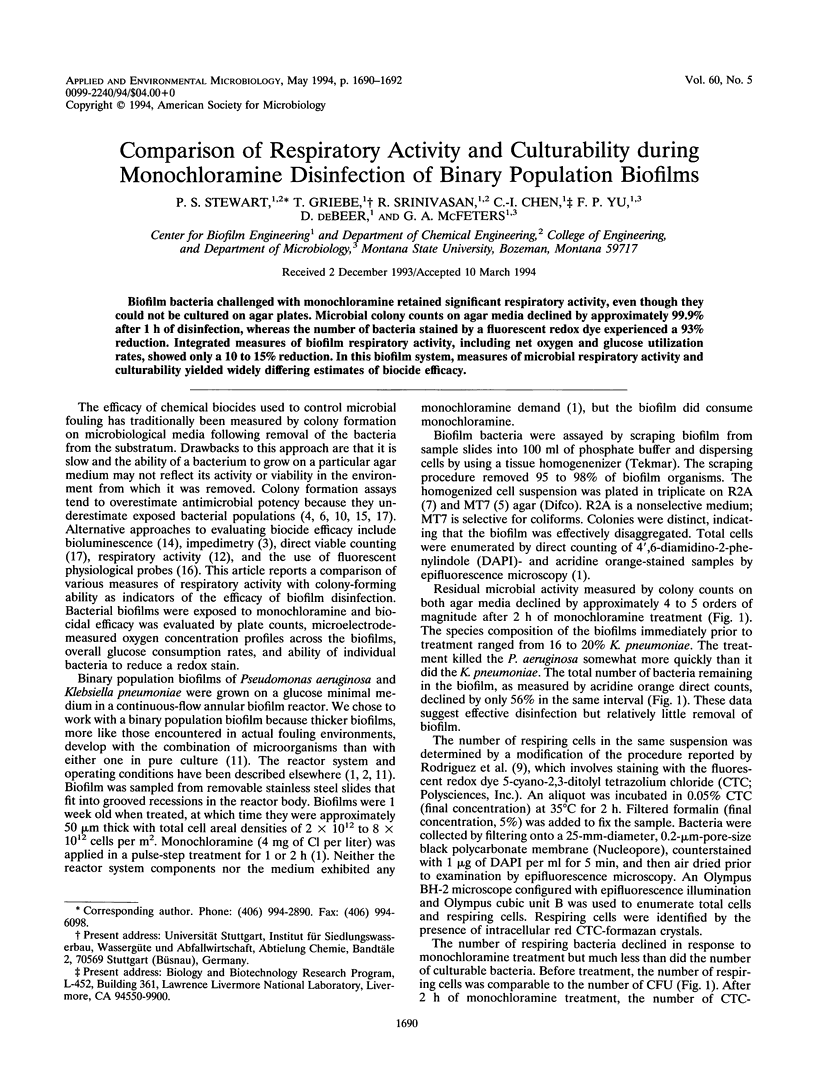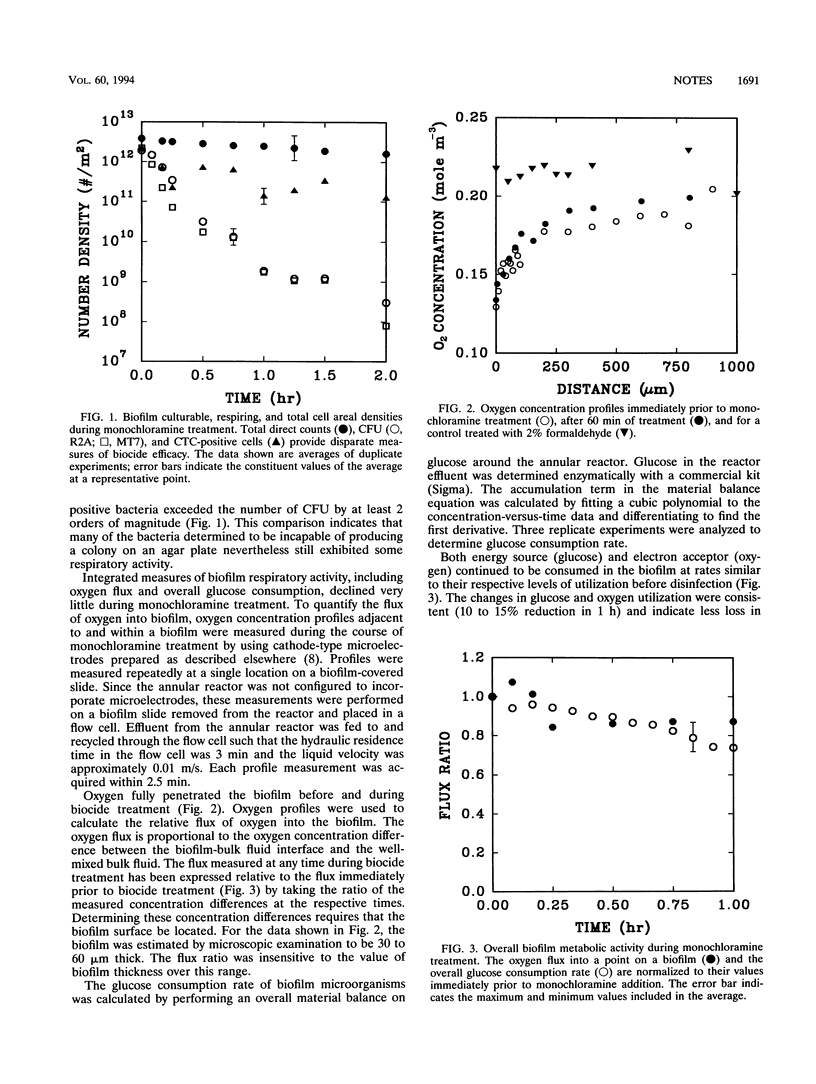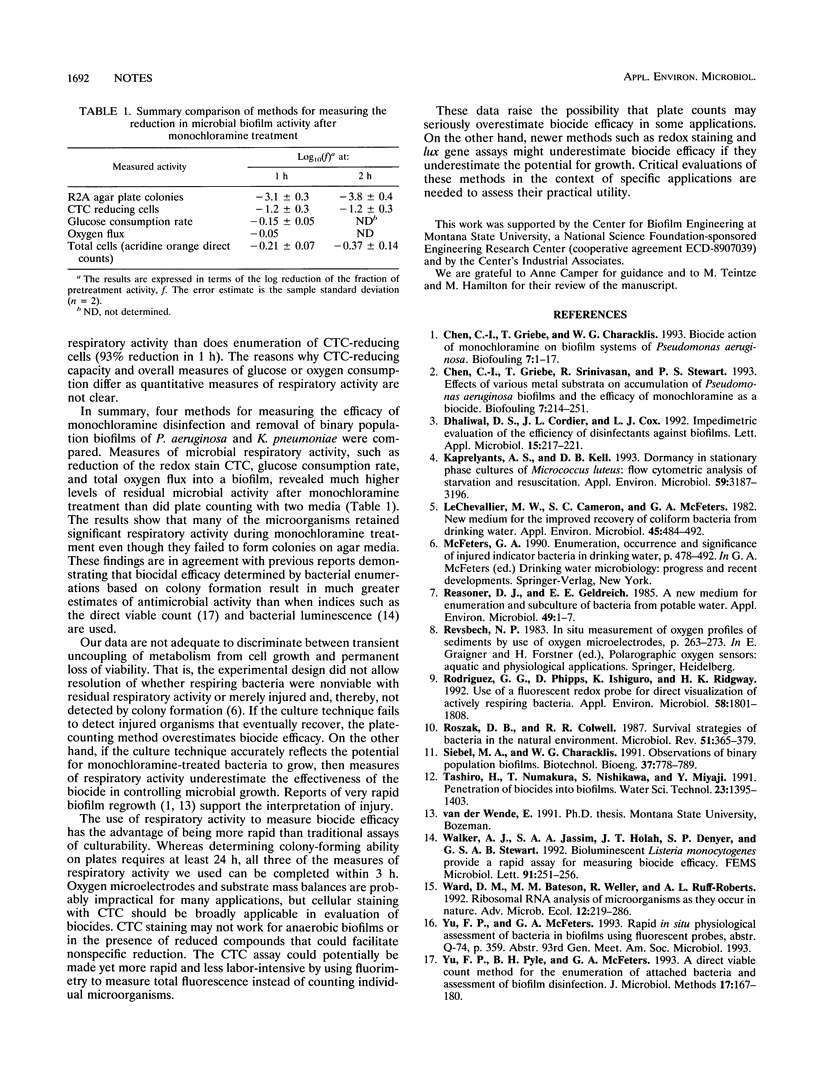Abstract
Biofilm bacteria challenged with monochloramine retained significant respiratory activity, even though they could not be cultured on agar plates. Microbial colony counts on agar media declined by approximately 99.9% after 1 h of disinfection, whereas the number of bacteria stained by a fluorescent redox dye experienced a 93% reduction. Integrated measures of biofilm respiratory activity, including net oxygen and glucose utilization rates, showed only a 10 to 15% reduction. In this biofilm system, measures of microbial respiratory activity and culturability yielded widely differing estimates of biocide efficacy.
Full text
PDF


Selected References
These references are in PubMed. This may not be the complete list of references from this article.
- Kaprelyants A. S., Kell D. B. Dormancy in Stationary-Phase Cultures of Micrococcus luteus: Flow Cytometric Analysis of Starvation and Resuscitation. Appl Environ Microbiol. 1993 Oct;59(10):3187–3196. doi: 10.1128/aem.59.10.3187-3196.1993. [DOI] [PMC free article] [PubMed] [Google Scholar]
- LeChevallier M. W., Cameron S. C., McFeters G. A. New medium for improved recovery of coliform bacteria from drinking water. Appl Environ Microbiol. 1983 Feb;45(2):484–492. doi: 10.1128/aem.45.2.484-492.1983. [DOI] [PMC free article] [PubMed] [Google Scholar]
- Reasoner D. J., Geldreich E. E. A new medium for the enumeration and subculture of bacteria from potable water. Appl Environ Microbiol. 1985 Jan;49(1):1–7. doi: 10.1128/aem.49.1.1-7.1985. [DOI] [PMC free article] [PubMed] [Google Scholar]
- Rodriguez G. G., Phipps D., Ishiguro K., Ridgway H. F. Use of a fluorescent redox probe for direct visualization of actively respiring bacteria. Appl Environ Microbiol. 1992 Jun;58(6):1801–1808. doi: 10.1128/aem.58.6.1801-1808.1992. [DOI] [PMC free article] [PubMed] [Google Scholar]
- Roszak D. B., Colwell R. R. Survival strategies of bacteria in the natural environment. Microbiol Rev. 1987 Sep;51(3):365–379. doi: 10.1128/mr.51.3.365-379.1987. [DOI] [PMC free article] [PubMed] [Google Scholar]
- Walker A. J., Jassim S. A., Holah J. T., Denyer S. P., Stewart G. S. Bioluminescent Listeria monocytogenes provide a rapid assay for measuring biocide efficacy. FEMS Microbiol Lett. 1992 Mar 15;70(3):251–255. doi: 10.1016/0378-1097(92)90706-t. [DOI] [PubMed] [Google Scholar]
- Yu F. P., Pyle B. H., McFeters G. A. A direct viable count method for the enumeration of attached bacteria and assessment of biofilm disinfection. J Microbiol Methods. 1993 Apr;17(3):167–180. doi: 10.1016/0167-7012(93)90044-i. [DOI] [PubMed] [Google Scholar]


